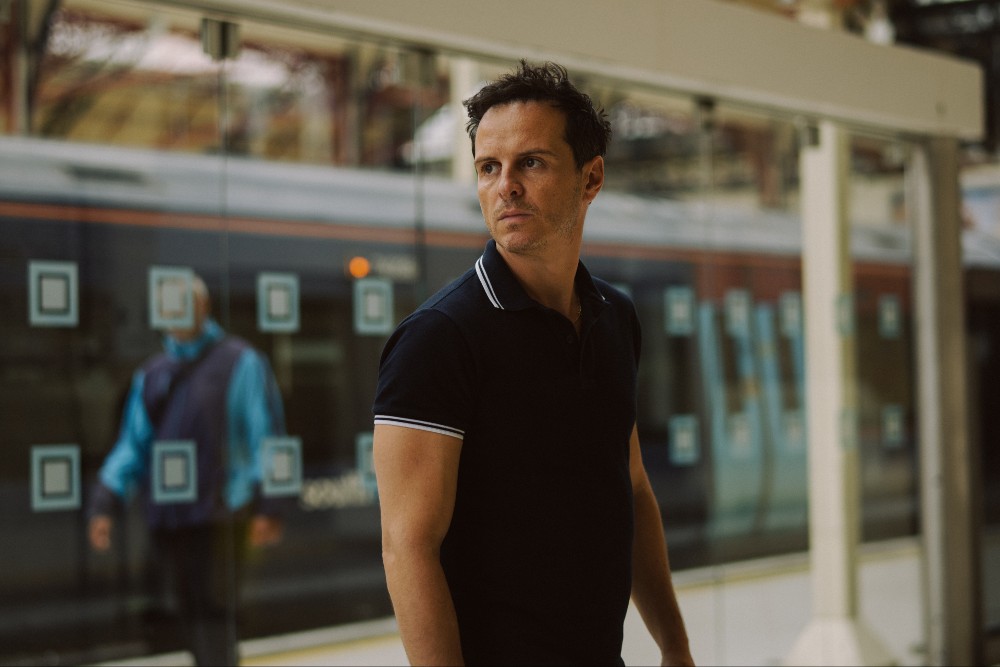
All of Us Strangers is the latest film from Andrew Haigh (45 Years, Lean on Pete). It’s an adaptation of Taichi Yamada’s novel about a screenwriter, played by Andrew Scott, who lives in a nearly-empty apartment building, but gets into a relationship with one of his few neighbors (Paul Mescal). At the same time, he decided to return to his suburban childhood home, only to encounter his parents (Jamie Bell, Claire Foy), who died in a car crash when he as a boy. (You can read J. Don Birnam’s review of the film from the Telluride Film Festival here.)
The movie takes a nostalgic approach to its storytelling, and to shoot the gorgeous film, Haigh called upon Cinematographer Jamie Ramsay SASC, who most recently shot Living, based Akira Kurosawa’s Ikiru, and the lighter See How They Run.
Below the Line spoke with Ramsay about what was involved on his end with giving All of Us Strangers such a dreamlike quality to it, working in so many different types of environments, and making it all work cohesively.
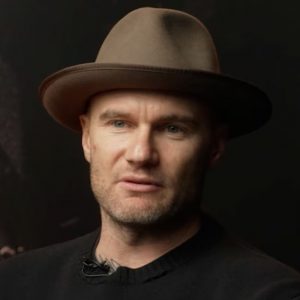
Below the Line: You’ve shot many British films over the past few years, but this was your first time working with Andrew. How did that come about?
Jamie Ramsay: Andrew is a filmmaker that I’ve respected for a long time. I love the work that he’s done, and I really love his sensibility as a storyteller. Honestly, it was just a matter of time before our paths crossed. We had often touched a similar subject matter in what we had done before, in our earlier work, in my earlier work.
I think when this movie came along, it was well-timed, because I had a couple of fairly interesting British films under my belt, which he was able to watch. I think he liked my sensibility as a storyteller. Our meeting kind of sealed that sort of chemistry, so that was really it. Once I’d read the script, and I was able to speak from my position as a creative with regards to the story, it locked us in.
BTL: You’ve worked with cameras for maybe 17 year or so, but you’ve been especially busy the last four or five years, doing many back-to-back movies. What led you to the intense schedule?
Ramsay: I just shot my 13th movie. In fact, in my 20s, I did more movies than I’ve done in my 30s and 40s, but what had happened was I realized that the kind of movies I wanted to make, the scripts weren’t very frequent and didn’t land on my lap very often, obviously, being in South Africa. Rather than diluting my creative pool of work, I decided to go on the journey of taking on a commercials reel, and go down the commercials route.
Obviously, I needed to survive, and I needed to have the ability to eat, so I decided to go down the commercials route for about six years. I took a bit of a break from narrative, and then came back with that movie Moffie with Oliver Hermanus, and that really triggered the next roll of the dice in terms of long-form, and here I am now after a wonderful four or five years of narrative.
BTL: All of Us Strangers is beautifully shot and gorgeous with so many different locations and looks. What was your first conversation with Andrew like in terms of how he wanted the movie to look?
Ramsay: This is the beauty about working with kindred spirits. We never spoke about how we want this movie to look. We spoke about how we want this movie to feel. We wanted this movie to feel as if it was a memory being lived in real time. We wanted a level of nostalgia to feed through the film in a very delicate way. We wanted the movie to be a subjective journey, experienced through the cast, but also through how the camera moved within the cast and within the performance. More than anything else, it just needed to be soft, subjective, and it needed to have an ethereal feeling of nostalgia.
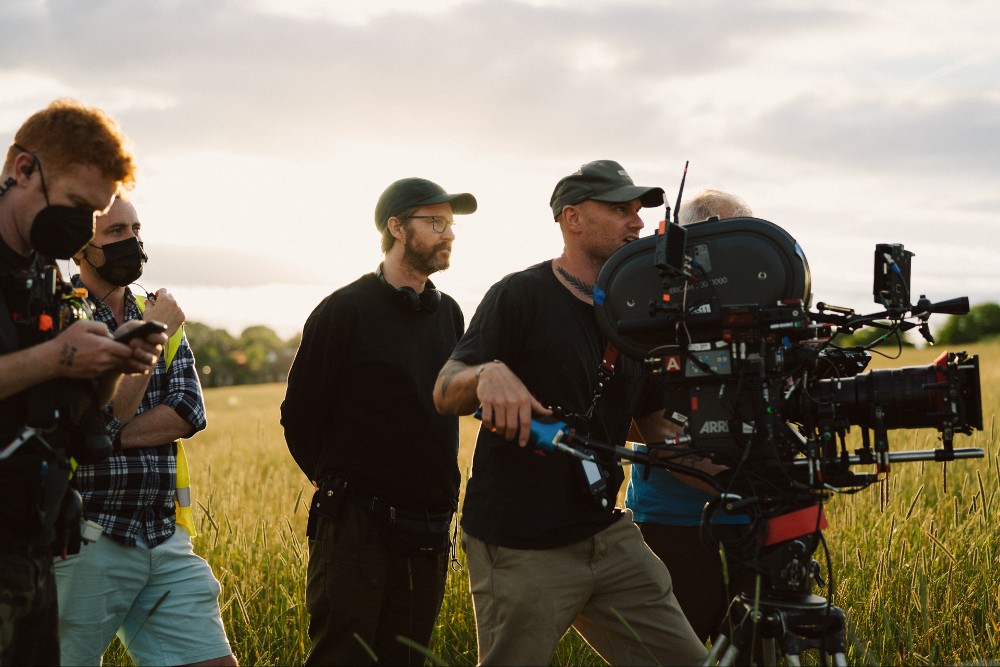
BTL: That said, that first shot of London at dusk. How did you pull that off? Did you just happen to be in the right place at the right time?
Ramsay: That shot, we had to do a whole plate shoot, obviously, their apartment was in studio, so we needed to do a plate shoot, so we had the relevant backgrounds for the apartment. We kind of gauged where the weather was going. Obviously, London’s fairly unpredictable in terms of weather, so we used our array of apps to figure out when the good weather would be, and I said to production, “Okay, look, I think in these 48 hours, we’re going to have a decent amount of weather and interesting stuff.”
We put our high resolution cameras up in the apartment, and we were blessed with the most beautiful backgrounds. We had 25 different weather systems that came through, and that was one of the plates that we achieved. The plate itself an exquisite moment to view in real life, and in playback, it was even more exquisite. What was wonderful is that immediately, I thought we could apply it to the feeling of certain scenes. Certainly the opening scene was one of them.
BTL: With that in mind, there’s a dreamlike quality to the entire film. Do use different lenses than you normally would to capture that?
Ramsay: I’ll launch this by telling you that one of the big driving forces for Andrew, our director, was the fact that all of our decisions should be conscious, but should be delicate. They really needed to be nuanced. When you’re representing nostalgia, you never want to be overt with it, and this dream-like sense of being awake, but asleep, sort of there but not there. It’s a delicate line to walk, so our choices needed to be conscious, but had to be soft enough to get underneath Andrew’s radar.
One of our big choices in terms of representing this kind of analog nostalgia was us shooting on analog 35mm film. We thought that simple choice would really give us a base that we could work off of, and then allow our other decisions to be a little bit more responsible. We knew just having the base of shooting a 35mm would allow us that feeling of nostalgia to sit in the background of everything.
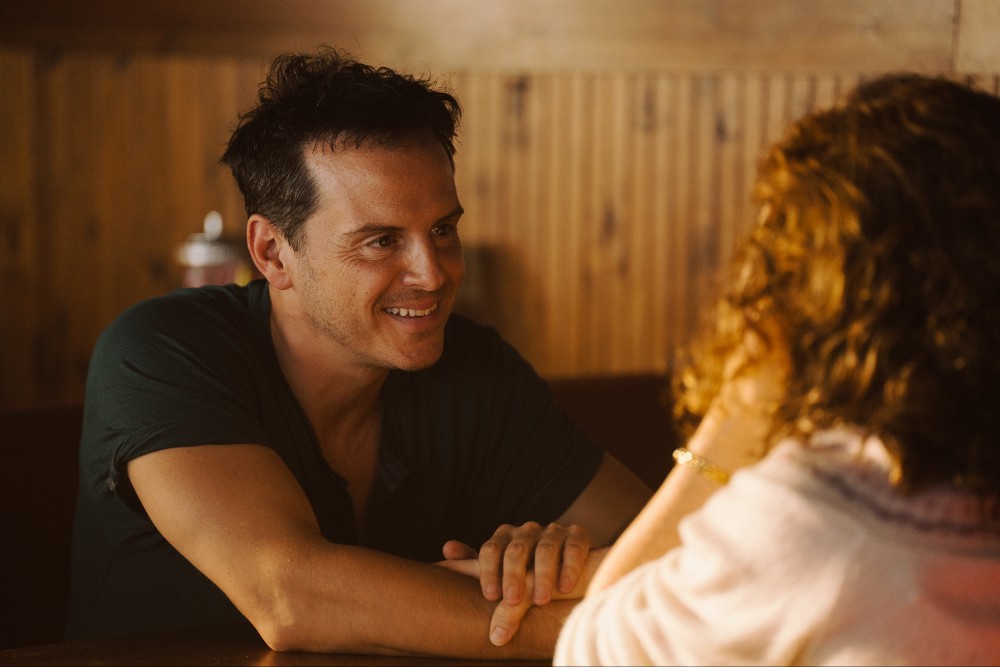
BTL: It’s often hard to tell whether something is shot on film, because the digital cameras have gotten so good, but it really does add a lot when you think about it and realize it was shot on film. It definitely added what you’re talking about.
Ramsay: I think if you can tell, you’ve lost the race already, but if you can FEEL something’s different than you’ve won.
BTL: You mentioned that some locations were built on a stage. What’s fascinating about the movie is that there are so many different aspects to it: there are interiors, exteriors, nights, days. Every scene has a different look. Can you talk about shooting on a stage, and how you worked with the production designer and set decorator to make sure they had the lights they needed to make it look authentic, but you had the light you needed as well?
Ramsay: There’s a lot going on in that question, but I’ll narrow it down like this. Basically, the only location that was in a studio was the apartment, and then we had the lift that the boys were in. That was on set. The rest were locations. What was important for us on set was, because his apartment was related to his current day existence, which is kind of representative of reality. That was where the slightly digital, colder presence of things existed.
My lighting fixtures were LED lighting fixtures, and we shot against an LED wall, so it was the analog film meeting the digital experience, which gave it a specific look. But the majority of locations, which were representative of his trauma counseling, where he went back to his parents’, where he went to the diner, all of that I wanted to represent wholly by analog lighting fixtures. So using incandescent practicals, using tungsten heads on old dimmer boards, just using an older lighting array in order to really give that sense of a memory.
More than that, it was just us saying, “Okay, we’re going to separate these two worlds in a very delicate way. How are we going to do that?” I presented a number of options to Andrew, and he would say, “Yes, this is a good route, this is a good route. Maybe that’s too heavy, maybe this is too light.” After four weeks of conversation, we landed where we landed.
BTL: When you had to shoot on locations, you had the space you needed to do with your camera team to light everything, and presumably, you couldn’t move or knock down walls so much?
Ramsay: In terms of our locations, that was our biggest technical challenge, because shooting on film, it has a much bigger footprint than shooting on digital. When we record these locations, my gaffer, my grip, would often look to me with desperate faces, and I would say, “Listen, we just have to find a way, guys, and my guys were very intuitive about what they did, and were able to fix things in very small places and just build infrastructure inside the rooms that would help out.”
But to answer your question, in the main location, which was the home where Andrew’s parents lived, which was actually our director’s childhood home that we shot in, and we ended up convincing the owner to let us cut a hole out of his wall, so we could connect two rooms. At least we had one space that was not just four walls; it had another space beyond it. The space and size was definitely a challenge for us.
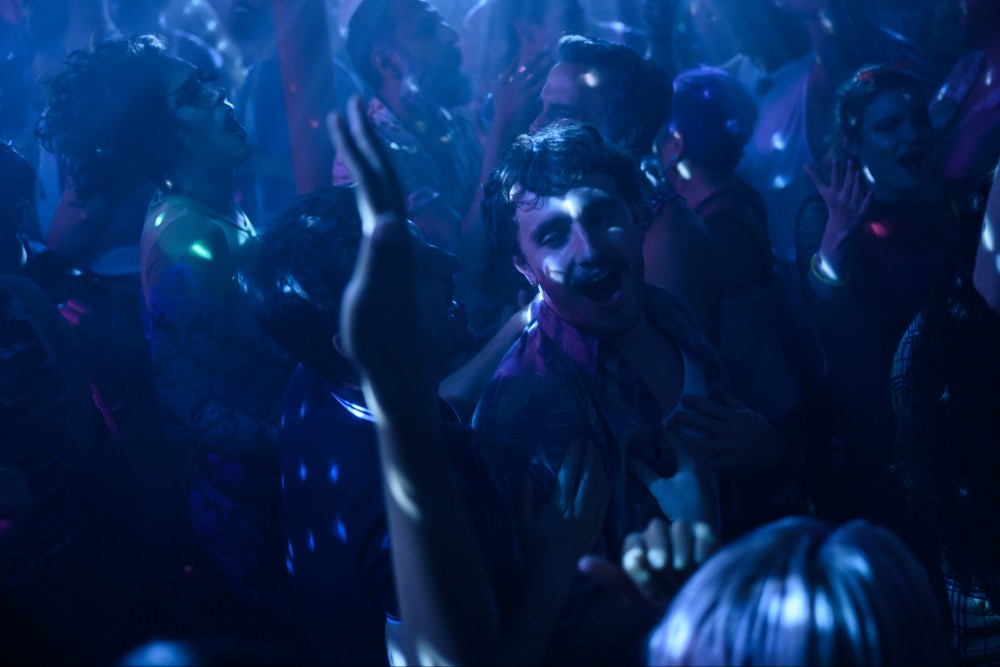
BTL: Filming inside a disco must have been a challenge in its own right, and it could be a nightmare, since that has its own lighting that’s part of that environment. How was it shooting those scenes since there’s less control, I’d assume?
Ramsay: When we shot the club scene, the producers were quite excited that they had their own lights, and then, I kind of broke their hearts, and I said, “That’s great, but we will never ever use their own lights.” I think the important thing is about having control, and I had my team with me on my recces, and they were able to look at the infrastructure, in terms of rigging that existed inside the location. And then, we just put all of our own lights in there.
We never used any of their own lights. We used a combination of LED fixtures, we used old disco lights, we used stage lighting, so that we could have some sort of intelligent control over the light. Yes, from an aesthetic point of view, we leaned heavily on what an ’80s or ’90s disco feel would be, but we had to have our own control over it. We basically relit the entire club ourselves.
BTL: I’m also interested in your coloring process on this film, because like I said, there were lots of different loctions, nighttime and daytime shoots. So was it a longer than usual coloring process to make it all look cohesive?
Ramsay: Color is very important to me, and that process is something I hold really dear. I’ve got some fantastic relationships with different people, in regards to that, that have taken years to develop. My colorist is a man named Joseph Bicknell at Company 3, and he understands me as a DoP and as a creative. In the run-up to the film, I sat down with him and spoke to him about the feeling and the look, and he was able to build me a couple of show LUTs that we used.
Whenever we did our dailies, our dailies colorist would apply our show LUT to it, and I would see the dailies with the show LUT, and it would feel great. That show LUT would go through the offline, and by the time it goes to Joseph at Company Three – and this is why we’ve developed this workflow process – our grade was probably a week and a bit long, purely because we developed our LUT, we led to it, we understood what it was going to be, and ultimately, when it landed on his desk, he knew what we were looking for, because we’d been working this look throughout the whole film, and he was able to run with it.
All of Us Strangers is currently playing in select theaters across the country.





